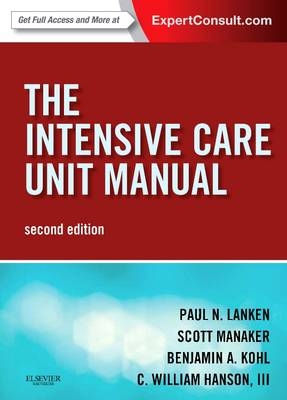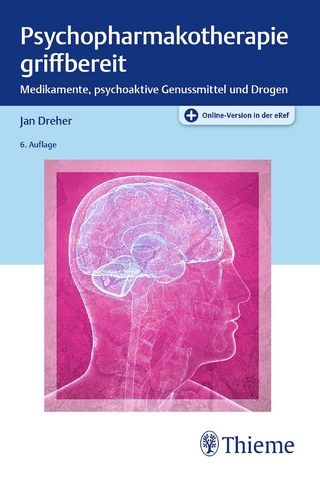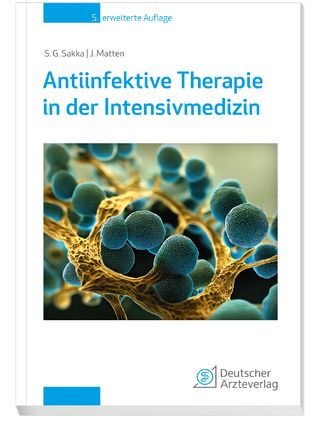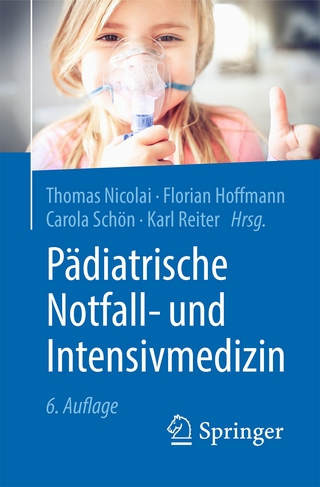
The Intensive Care Unit Manual
W B Saunders Co Ltd (Verlag)
978-1-4160-2455-2 (ISBN)
Intensive Care Unit Manual is a practical, hands-on, how-to manual that covers the full spectrum of conditions encountered in the ICU, guiding you step-by-step from your initial approach to the patient through diagnosis and treatment. Compact, affordable, and comprehensive, the ICU Manual puts all the critical care information you need right at your fingertips!
Stay at the forefront of critical care with a practice-oriented, relevant, and well-illustrated account of the pathophysiology of critical disease, presented in a highly readable format.
Gain valuable insight into the recognition, evaluation, and management of critical conditions such as respiratory, hemodynamic, and infectious diseases; management of ICU patients with special clinical conditions; cardiovascular, hematologic, and neurological disorders; poisoning and overdoses; trauma and burns; and much more!
Grasp the latest developments in critical care with extensive updates and revisions to several key chapters, as well as brand-new chapters on Alcohol Withdrawal Syndromes; Acute Heart Failure Syndromes; Noninvasive Ventilation; and more ICU conditions.
Understand and apply the most important ICU practices, including management of acute respiratory failure, mechanical ventilation, invasive hemodynamic monitoring, and the care of patients with special needs, AIDS, end-stage renal disease, or end-stage liver disease.
Get convenient access to the full text and image library online at Expert Consult, in addition to online-only text, figures, and tables from the Alcohol Withdrawal Syndromes and Acute Heart Failure Syndromes chapters.
Section I. Basic Pathophysiologic Principles and Their Application in the Intensive Care Unit
1. Approach to Acute Respiratory Failure
2. Approach to Mechanical Ventilation
3. Noninvasive Ventilation
4. Liberation and Weaning from Mechanical Ventilation and Extubation
5. Sedation and Analgesia during Mechanical Ventilation
6. Use of Neuromuscular Blocking Agents
7. Assessment and Monitoring of Hemodynamic Function
8. Cardiogenic Shock and Other Pump Failure States
9. Hemorrhagic Shock
10. Septic Shock
11. Vascular Access Issues and Procedures
Section II. Supportive Care for Intensive Care Unit Patients
12. Approach to Supportive Care and Noninvasive Bedside Monitoring
13. Management of the Critical Care Patient
14. Health Care- Associated Infections
15. Nutritional Therapy
16. Nutrition-Related Access Procedures
17. Pharmacokinetic Alterations in the Critically Ill
18. Rational Use of Antimicrobials
19. Rational Use of Blood Products
Section III. Specialized Care for Intensive Care Unit Patients
20. Renal Replacement Therapy
21. Rehabilitation Interventions and Recovery from Critical Illness
22. Swallowing and Communication Disorders
23. Care of the Patient Infected with Human Immunodeficiency Virus Infection
24. Care of the Cancer Patient with Neutropenia or Thrombocytopenia
25. Care of the Challenge-to-Wean Patient
26. Care of the Patient with End-Stage Renal Disease
27. Care of the Patient with End-Stage Liver Disease
28. Care of the Maternal-Fetal Unit
29. Care of the Patient with Morbid Obesity
Section IV. Problems Arising in the Intensive Care Unit Setting: Evaluation and Management
30. Airways and Emergency Airway Management
31. Alcohol Withdrawal: Diagnosis and Management
32. Allergies to Antibiotics
33. Arrhythmias (Bradycardias)
34. Arrhythmias (Tachycardias)
35. Barotrauma and Chest Tubes
36. Change in Mental Status
37. Delirium in the Intensive Care Unit: Diagnosis and Treatment
38. Diarrhea Developing in the Intensive Care Unit Patient
39. Electrolyte Disorders
40. Ileus
41. Increased Intracranial Pressure
42. Pressure Ulcers: Prevention and Management
43. Skin Rashes
44. Sleep Disturbances in the Intensive Care Unit
45. Thrombocytopenia
46. Transfusion Reactions
47. Ventilator Alarm Situations
48. Weakness Developing in Intensive Care Unit Patient
Section V. Presenting Problems for Intensive Care Unit Admission
Cardiovascular
49. Advanced Cardiac Life Support (ACLS) and Therapeutic Hypothermia
50. Chest Pain and Myocardial Ischemia
51. Thoracic Aortic Aneurysms and Dissections
52. Acute Heart Failure Syndromes
53. Hypertensive Crisis and Management of Hypertension
54. Pericardial Tamponade
Environmental
55. Hypothermia and Hyperthermia
56. Smoke Inhalation and Carbon Monoxide Poisoning
57. Drug Overdoses and Toxic Ingestions
Gastrointestinal
58. Acute Pancreatitis
59. Acute Liver Failure
60. Lower Gastrointestinal Bleeding and Colitis
61. Upper Gastrointestinal Bleeding
Hematologic
62. Hemolytic Anemia
63. Idiopathic and Thrombotic Thrombocytopenias
Infections
64. Acute Central Nervous System Infections
65. Community-Acquired Pneumonia
66. Necrotizing Fasciitis and Related Soft Tissue Infections
Neurologic
67. Acute Neuromuscular Weakness
68. Brain Death and Management of Potential Organ Donors
69. Neurological Assessment and Prognosis after Cardiopulmonary Arrest
70. Status Epilepticus
71. Stroke
Obstetric
72. Obstetric and Postobstetric Complications
Respiratory
73. Acute Lung Injury and Acute Respiratory Distress Syndrome
74. Alternate Modes of Ventilation for Acute Lung Injury
75. Acute Respiratory Failure Due to Asthma
76. Acute Respiratory Failure Due to Chronic Obstructive Pulmonary Disease
77. Deep Venous Thrombosis and Pulmonary Embolism
78. Diffuse Alveolar Hemorrhage
79. Massive Hemoptysis
80. Obesity Hypoventilation Syndrome and Other Sleep-Related Breathing Disorders
Renal/Metabolic/Endocrine
81. Acute Kidney Injury and Rhabdomyolysis
82. Diabetic Ketoacidosis, Hyperglycemic Hyperosmolar State, and Alcoholic Ketoacidosis
83. Metabolic Acidoses and Alkaloses
84. Disorders of Water Homeostasis: Hyponatremia and Hypernatremia
85. Thyroid and Adrenal Disorders in the Intensive Care Unit
Surgical-General
86. Perioperative Approach to the High-Risk Surgical Patient
87. Management of Postoperative and Other Acute Pain
Surgical-Specialized
88. Cardiac Surgery
89. Craniotomy
90. Major Abdominal Surgery: Postoperative Considerations
91. Major Tissue Flaps
92. Major Vascular Procedures
93. Perioperative Care of the Morbidly Obese Patient
94. Thoracic Surgical Patient
Trauma
95. Approach to the Trauma Patient
96. Critical Care for the Orthopedic Patient
97. Abdominal Trauma
98. Extremity and Major Vascular Trauma
99. Head Trauma
100. Thoracic Trauma
101. Spinal Injury
Section VI. Professionalism and Interpersonal and Communication Skills
102. Ethical Principles, Communication, and End-of-Life Care
103. Teamwork and Collaborative Practice in the Intensive Care Unit
104. Family-Centered Care and Communication with Families of Intensive Care Unit Patients
105. Providing Culturally Competent Care
106. Sleep Deprivation and Sleepiness in Medical Housestaff and Appropriate Countermeasures
Systems-Based Practice
107. Medical Errors and Patient Safety
108. Medical Malpractice, Risk Management, and Chart Documentation
109. Long-Term Acute Care in the Spectrum of Critical Care Medicine
110. Rapid Response Systems: Rapid Response Teams and Medical Emergency Teams
111. Telemedicine Applied to the Intensive Care Unit
112. Transporting the Intensive Care Unit Patient
Appendix
A. Oxygen-Hemoglobin Dissociation Curves
B. Tidal Volume Ratios (VD/VT)
C. Palliative Drug Therapy for Terminal Withdrawal of Mechanical Ventilation
D. Advanced Cardiac Life Support (ACLS) Algorithms
E. Tables of Height, Predicted Body Weight (PBW), and Tidal Volumes of 4-to-8 mL/kg PBW for Females and Males
| Verlagsort | London |
|---|---|
| Sprache | englisch |
| Maße | 152 x 229 mm |
| Gewicht | 1230 g |
| Themenwelt | Medizin / Pharmazie ► Medizinische Fachgebiete ► Intensivmedizin |
| ISBN-10 | 1-4160-2455-7 / 1416024557 |
| ISBN-13 | 978-1-4160-2455-2 / 9781416024552 |
| Zustand | Neuware |
| Informationen gemäß Produktsicherheitsverordnung (GPSR) | |
| Haben Sie eine Frage zum Produkt? |
aus dem Bereich


